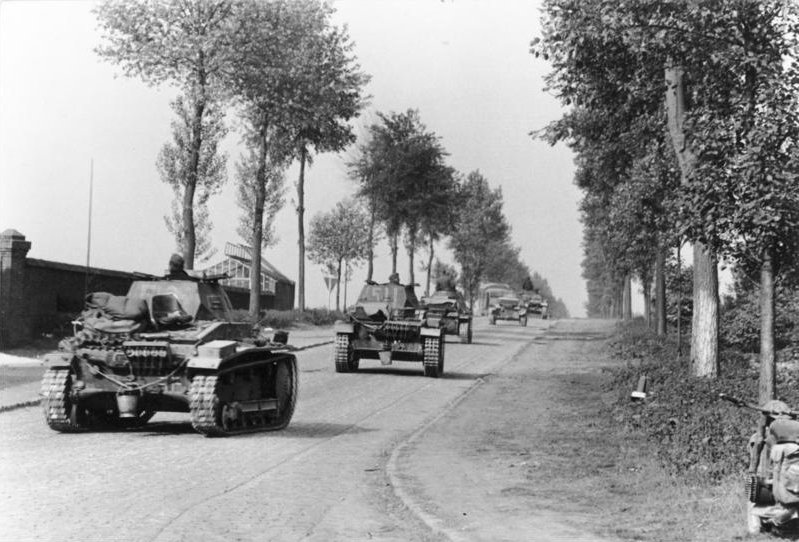The “Miracle at Dunkirk,” when 338,000 troops were evacuated in Operation Dynamo where optimistic estimates topped out at 45,000 might be rescued, was a turning point for the allies, allowing them to salvage troops that would fight in North Africa, at D-Day, and beyond.
In 7 steps, here’s how the British Expeditionary Force was trapped on the beaches of France and then rescued in Operation Dynamo.
1. The Brits arrive on the continent

The seeds of Dunkirk were laid on Sep. 3, 1939, when the British Expeditionary Force was sent to France following Germany’s invasion of Poland and amidst the obvious German military buildup of the late 1930s. Eight first and second-line infantry divisions as well as a number of support troops had arrived by May 1940, spending most of their time training and preparing defenses.
The military maneuvers and buildup between the two sides were dubbed the “Phoney War.” Belgium, the Netherlands, and other countries across Europe prepared for the likelihood of a German invasion.
2. The Germans invade
On May 10, 1940, the “Phoney War” came to a violent end as the Germans invaded the Netherlands and Belgium. The Germans quickly took ground and captured bridgeheads on the River Meuse, allowing them to invade France through the Ardennes Forest.
3. Allied countries collapse

The German blitzkrieg advanced faster and harder than most Allied leaders could believe, and countries quickly collapsed. One of the world’s greatest forts was captured in Belgium in only hours. The Netherlands, Belgium, Luxembourg, and others surrendered within weeks.
4. The French and British withdraw towards the beaches
As army after army and country after country surrendered to the German war machine, those still fighting were forced to withdraw further and further east and north. They were pushed against the beaches of France. Panzer forces attacked and captured the French deep-water ports at Boulogne and Calais on May 25 and 26, limiting the potential evacuation options.
5. The Panzers stop

The 48-hour timeline was agreed upon because it was the longest that forces could reliably hold out against German armor. But the German tanks had mysteriously stopped their push towards Dunkirk itself on May 23 by order of Gen. Ewald von Kleist. The next day, a full “stop order” was given by Hitler.
The Allies responded by quickly shoring up their defenses as best they could. What was a loose line of troops on May 23, likely to be brushed aside quickly, became a much more formidable line of dug in but exhausted forces.
6. The evacuation begins
On May 26, Operation Dynamo was launched with the goal of evacuating 45,000 troops within 48 hours before the beaches fell. British defenders helping to hold Calais sent their own evacuation ships to Dover to help evacuate those troops at Dunkirk. Calais fell that evening; all British and French forces there were killed or captured.
7. The evacuation runs for 10 days
The pace of the evacuation started slow on May 26 with 8,000 men removed, but increased in efficiency quickly result in more men getting off.
Within the first few days, Royal Navy officers working the “Mole,” a pier-like breakwater that protected the harbor from ocean currents, turned it into an improvised dock that evacuated 1,000 troops an hour at its peak. Additional men embarked from improvised piers and the beaches themselves.

One of the most shocking events in the evacuations began on May 27 when the Royal Navy requisitioned small vessels for use in the evacuations. Most of the ships were manned by the Royal Navy, but some ship owners insisted that they would pilot their craft to assist in the evacuation.
The crews of the “Little Ships of Dunkirk” grew on May 29 when the BBC broadcasted an appeal “for men with experience of motorboats and coastal navigation.”

The fleets of navy and civilian vessels crossed back and forth across the English Channel, rescuing about 338,000 troops, mostly British and French, by June 4 when Operation Dynamo ended.
Learn more about the events of May and June 1940 in the video below:
YouTube, World of Tanks North America


